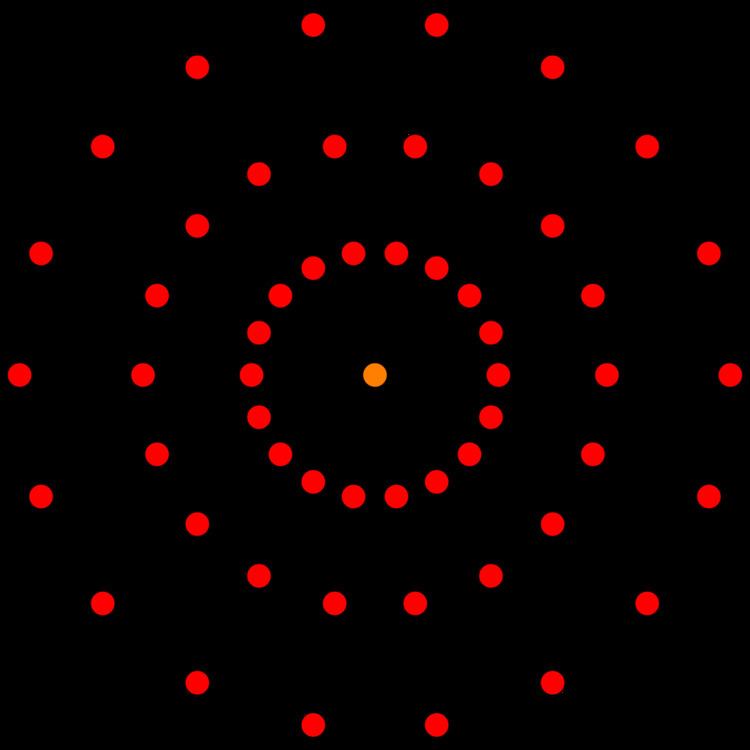 | ||
In 7-dimensional geometry, 132 is a uniform polytope, constructed from the E7 group.
Contents
- 132 polytope
- Alternate names
- Construction
- Related polytopes and honeycombs
- Rectified 132 polytope
- References
Its Coxeter symbol is 132, describing its bifurcating Coxeter-Dynkin diagram, with a single ring on the end of one of the 1-node sequences.
The rectified 132 is constructed by points at the mid-edges of the 132.
These polytopes are part of a family of 127 (27-1) convex uniform polytopes in 7-dimensions, made of uniform polytope facets and vertex figures, defined by all permutations of rings in this Coxeter-Dynkin diagram: .
1_32 polytope
This polytope can tessellate 7-dimensional space, with symbol 133, and Coxeter-Dynkin diagram, . It is the Voronoi cell of the dual E7* lattice.
Alternate names
Construction
It is created by a Wythoff construction upon a set of 7 hyperplane mirrors in 7-dimensional space.
The facet information can be extracted from its Coxeter-Dynkin diagram,
Removing the node on the end of the 2-length branch leaves the 6-demicube, 131,
Removing the node on the end of the 3-length branch leaves the 122,
The vertex figure is determined by removing the ringed node and ringing the neighboring node. This makes the birectified 6-simplex, 032,
Related polytopes and honeycombs
The 132 is third in a dimensional series of uniform polytopes and honeycombs, expressed by Coxeter as 13k series. The next figure is the Euclidean honeycomb 133 and the final is a noncompact hyperbolic honeycomb, 134.
Rectified 1_32 polytope
The rectified 132 (also called 0321) is a rectification of the 132 polytope, creating new vertices on the center of edge of the 132. Its vertex figure is a duoprism prism, the product of a regular tetrahedra and triangle, doubled into a prism: {3,3}×{3}×{}.
Alternate names
Construction
It is created by a Wythoff construction upon a set of 7 hyperplane mirrors in 7-dimensional space. These mirrors are represented by its Coxeter-Dynkin diagram, , and the ring represents the position of the active mirror(s).
Removing the node on the end of the 3-length branch leaves the rectified 122 polytope,
Removing the node on the end of the 2-length branch leaves the demihexeract, 131,
Removing the node on the end of the 1-length branch leaves the birectified 6-simplex,
The vertex figure is determined by removing the ringed node and ringing the neighboring node. This makes the tetrahedron-triangle duoprism prism, {3,3}×{3}×{},
